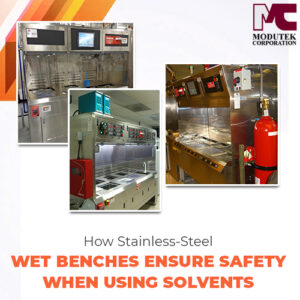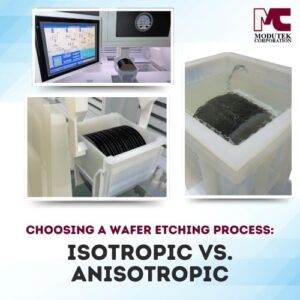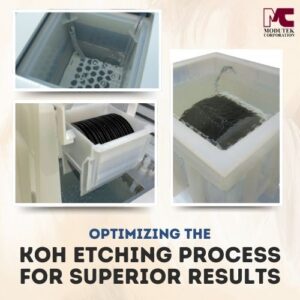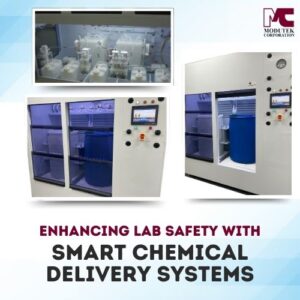 When solvents are used in stainless steel wet benches during semiconductor manufacturing, special measures are required to reduce the risk of fire or explosions. Solvents such as acetone are highly flammable. They are used for silicon wafer cleaning and stripping to remove contaminants from the silicon wafer and to remove photoresist. Essential safety measures include reducing the risk of igniting solvent vapors, eliminating containers and piping that might burn, and installing fire extinguishing equipment. Safety regulations govern the use of solvents in industrial operations, and equipment manufacturers can exceed basic requirements to ensure operator safety. When adequate safety measures are designed for the wet bench equipment and employees are properly trained, solvent-based stainless steel wet benches can be operated safely.
When solvents are used in stainless steel wet benches during semiconductor manufacturing, special measures are required to reduce the risk of fire or explosions. Solvents such as acetone are highly flammable. They are used for silicon wafer cleaning and stripping to remove contaminants from the silicon wafer and to remove photoresist. Essential safety measures include reducing the risk of igniting solvent vapors, eliminating containers and piping that might burn, and installing fire extinguishing equipment. Safety regulations govern the use of solvents in industrial operations, and equipment manufacturers can exceed basic requirements to ensure operator safety. When adequate safety measures are designed for the wet bench equipment and employees are properly trained, solvent-based stainless steel wet benches can be operated safely.
Applicable Safety Regulations Need to Be Followed
The following organizations or agencies have regulations that apply to the use of flammable solvents in industrial facilities. These are:
- The National Fire Protection Association Regulations (NFPA)
- The Occupational Safety and Health Administration Standards (OSHA)
- The National Electrical Code (NEC)
In addition, a manufacturer may have internal safety guidelines and policies that apply.
NFPA is concerned with preventing fires, and the organization develops codes and standards for materials and equipment used in industrial processes. For using solvents in semiconductor manufacturing, NFPA 30, the Flammable and Combustible Liquids Code, applies. It governs the storage, handling, and use of combustible and flammable liquids. In addition, NFPA 70 and 79 deal with the safety of electrical equipment.
OSHA makes sure employees have safe working conditions. It publishes standards for worker safety, and the 1910.106 standard applies to operations that use flammable liquids. This standard deals with workplace-related issues such as ventilation, fire resistance, and fire extinguishing.
The NEC governs the safe installation of electrical equipment. It includes classifying flammable liquids and resulting measures required for safe operation. Class I, Division 1 areas are locations where a flammable liquid vapor is usually present. Class I, Division 2 refers to locations where the vapor of flammable liquids may be present under unusual conditions, such as equipment failure. The NEC measures include limiting the energy of electrical signals and avoiding high temperatures for components.
Internal manufacturer safety guidelines can include other safety measures such as using interlocks, safe disposal of waste, and lids that close automatically. An experienced wet bench manufacturer will develop an integrated safety concept that ensures the safe operation of equipment.
Modutek Designs and Builds Safe Stainless Steel Wet Bench Systems
Modutek’s stainless steel wet bench systems are designed to be used with solvents and incorporate various safety features to ensure safe operation. In addition to meeting all compliance and relevant safety regulations, Modutek’s systems include additional safety measures based on the company’s experience. Safety features include the following:
- Electrical equipment controls are intrinsically safe, i.e., the electrical signals are too weak to cause sparks or heat wires.
- Equipment is designed to and certified for NEC Class I, Division 1 or 2
- Wiring complies with NFPA 70 and 79
- Safety interlocks to avoid unsafe operation.
- Monitors with alarms for dangerous conditions
- Liquid spills are detected
- Operators have a mushroom button for emergency off
- Auto lids seal chemical containers
- Carboys collect solvent waste for disposal
- Only qualified persons can access the controls to operate the equipment
- A gaseous automatic fire suppression system extinguishes fires
The Fire Suppression System Is a Key Safety Component
The Modutek fire suppression system removes oxygen from a solvent fire, extinguishing the flames. When a fire is detected via an IR Flame Detection Nozzle, the fire suppression system floods the area with carbon dioxide. The system comes with an Engineered Carbon Dioxide Fire System Package of documents. These include the following:
- Hazard Report
- Agent source report
- Battery backup calculation report
- System acceptance report
- Suppression summary
- Local application nozzle summary
- Pipe network report
Drawings that come with the system include a bill of materials, electrical schematics, and plumbing and instrumentation diagrams.
Modutek’s Expertise and Experience
Modutek works closely with customers to design and build safe wet bench equipment that meets their specific requirements. In addition, Modutek’s uses its in-house expertise from over 40 years of industry experience to provide innovative solutions to meet customer needs. Modutek’s wet bench systems and equipment are reliable and efficient in delivering excellent semiconductor manufacturing performance.





